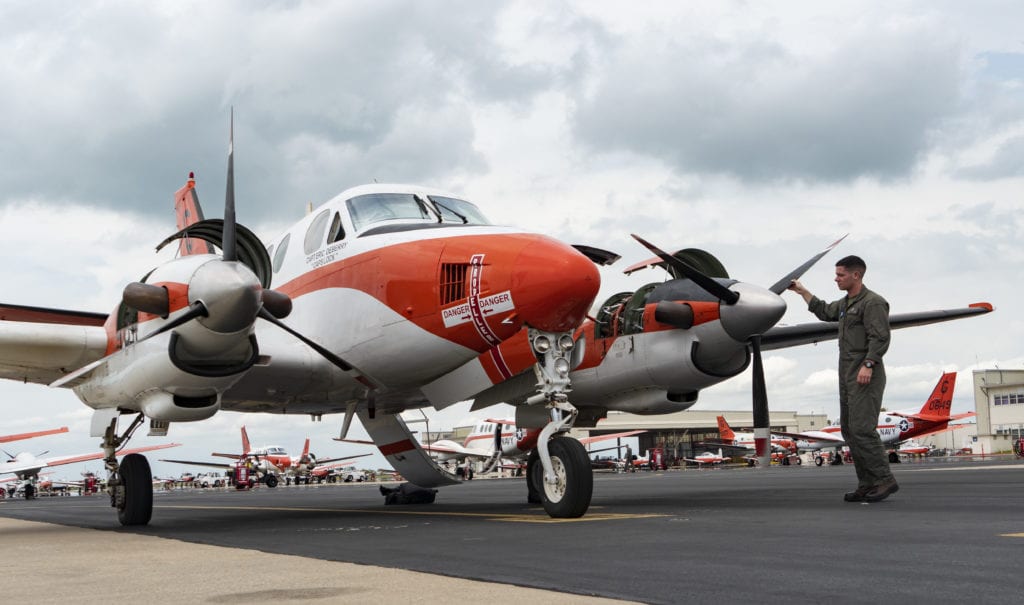
NATIONAL HARBOR, Md. — Textron Aviation is offering a version of its King Air 260 business twin turboprop aircraft to the U.S Navy as a replacement for the service’s Beech T-44C training aircraft, a company official said.
Brett Pierson, Textron Aviation Defense’s vice president for sales and strategy, told Seapower April 6 that the King Air 260 could be modified to meet the requirement for the Multi-Engine Training System (METS), including an aircraft with a high angle-of-attack capability.
Pilots being trained for the E-2 aircraft require such a requirement for training for carrier landings.
The Navy’s 2023 budget proposes the procurement of 10 METS, with a total of 58 in a three-year run.
According to a draft request for information posted May 26, 2020, the Navy is looking at existing twin-engine aircraft to replace the service’s fleet of 54 T-44Cs used to train Navy, Marine Corps, and Coast Guard pilots to fly aircraft such as the V-22 Osprey, E-2C/D Hawkeye, P-8 Poseidon, P-3 and EP-3 Orion, C-130/KC-130/HC-130 Hercules, E-6 Mercury, C-40 Clipper, HC-27 Spartan and HC-144 Ocean Sentry.
The T-44A, a variant of the Beech King Air 90 business aircraft, first entered service in 1980. The existing T-44As all have been modified to the T-44C configuration.
The Navy said the METS should have an FAA type certification for single- and dual-pilot operations under day and night visual flight rules and under instrument flight rules. It shall cruise at speeds greater or equal to 195 knots and shall be able to operate at a minimum of 20,000 feet above sea level. The aircraft also should have an endurance of 3.5 or more flight hours.
The pressurized aircraft cockpit will have side-by-side seating, as well as a jump seat for an instructor. The cockpit will be equipped with multifunction displays with digital moving map; redundant VHF and UHF radios; an integrated GPS/inertial navigation system; Automatic Dependent Surveillance-Broadcast; flight management system; weather radar, radar altimeter, and a cockpit data recorder.
The METS aircraft also shall have tricycle landing gear and a reconfigurable cargo bay in the cabin.
Pierson said the basic King Air is very close to what the requirements are.
Textron also builds the UC-12W operational support aircraft, a variant of the King Air 350, for the Marine Corps. The company also built the Navy’s T-6A/B Texan II single-engine training aircraft. Beech and Cessna are now brand names for some of Textron Aviation’s products.
- Navy’s Triton UAV to Provide Targeting for LRASM - May 2, 2024
- BlueHalo to Test C-UAS System on Marine Corps JLTV - April 29, 2024
- USS George Washington Deploys to U.S. Southern Command, Eventually Headed to Japan - April 26, 2024



